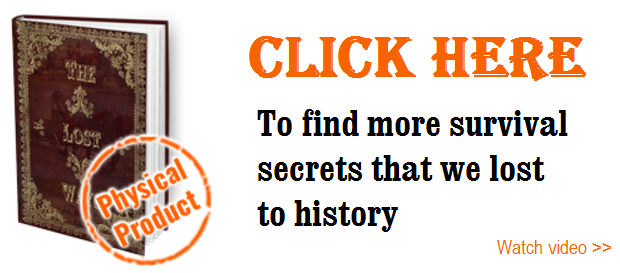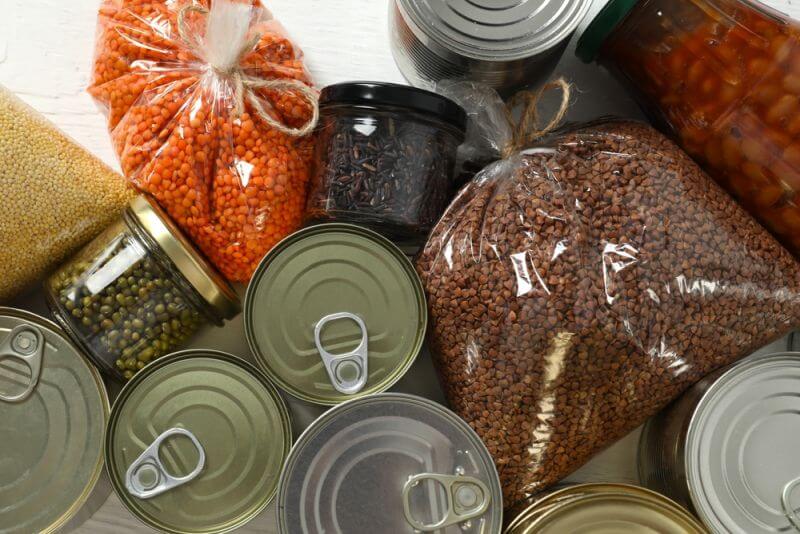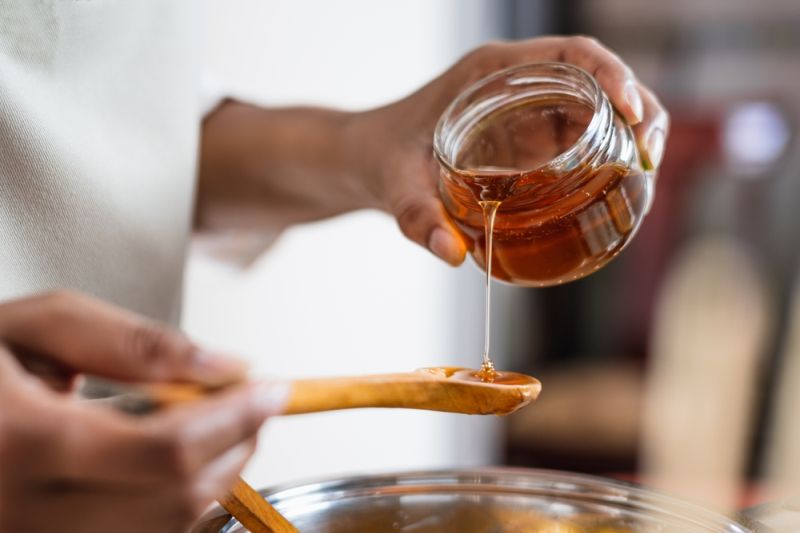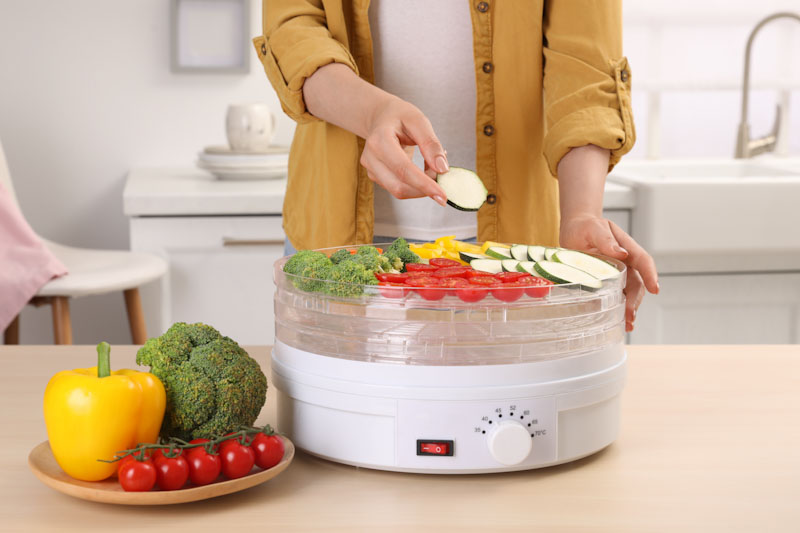I’ve got a confession: I’ve wanted to make Pemmican ever since I found the recipe for it in The Lost Ways, an awesome compilation of survival information edited and published by Claude Davis.
Invented by the natives of North America, pemmican was used by Indian scouts as well as early western explorers. These people spent a great deal of time on the go and depended on having portable, high-energy, highly nutritious, and filling foods that would last for long periods of time.
My friend Alan had mentioned on other occasions that he, like me, wanted to enhance his food reserves with this nutritious food. So, last weekend I canceled all my awesome plans of staying at home and watching TV, in order to surprise him by showing up with the necessary ingredients to make a DIY pemmican video.
I grabbed my camera and headed out the door. On my way, I stopped at a local supermarket and purchased what we’d need to make a batch of pemmican. It’s super simple; here’s all you need:
- 6 lbs. Beef
- 2 lbs. Rendered Beef Tallow
- 3 oz. Blueberries
When I arrived, Alan was pretty excited about the idea. We decided that he’d do all of the talking and I’d do the filming. So here it is:
I wanted to film this so that all of our readers here on Survivopedia can use this video tutorial to make their own pemmican. In addition to being nutritious enough to be a stand-alone survival food, you may be surprised to learn that pemmican doesn’t taste bad, either. In fact, with time, it will grow on you.
I hope you enjoyed the video and that it will inspire you to try making pemmican yourself. And remember that many other survival secrets of our ancestors are still to be discovered if you get The Lost Ways book! Click the image below for more!










Larry Davsi | March 24, 2016
|
Thank you for providing real content.
So many of the emails I get from prepper sites are
nothing but high pressure adds to get your money.
Larry
american indian | March 10, 2017
|
american indian.
american indian | March 10, 2017
|
if the american indians could process food to make it a superfood are we duuurrrrr. fast food just saying.we poison people or should i say companies poison people with the food they sell.we are worried about our government donald trump has it good for the the people.i am the people.the fda is a big problem.how could people with nothing sifi know a super food.durrrrr.eat more fast food people if you want to have cancer .oh and yes drink soda durrr
wesley IKENBERRY | March 24, 2016
|
I do not have the money right now, but would like to have your info. books–later? thank you—wes ikenberry
Wendell | March 25, 2016
|
Thanks for the video. I already bought “lost ways” and read about pemmican. But you made the process feel easier.
cheryl cappon | March 26, 2016
|
At the end you spoke of storing the pemmican in air tight bags so the fat would not go rancid. The early peoples did not have air tight zip locks, so what did they do? Also, if the fat going rancid is a problem, how could it still be edible years or as stayed decades later? I love all kinds of nuts but have found that is the main reason they do not store well.
Karen | July 7, 2016
|
I hear that properly rendered fat doesn’t go bad — maybe that’s the idea.
Tinker | September 28, 2018
|
Cheryl: You are correct. They did not even have butcher paper. They would have had to use animal skins or large leaves. Perhaps they added a layer of salt outside the leaf and then another layer of leaves. Don’t know. The book does not say.
Karen may be correct. he did specify the correct temp range to avoid destroying the fatty acids. However, they probably had a lot still go rancid. Otherwise we would be finding old stashes all over the place. Or, at least it would not be as rare as it is.
Also, I don’t think the Indians planned to use this past the spring when they could start harvesting wild edibles. So it was not designed for years and years, but only the winter months where spoilage is reduced anyway.
To me, this is your barest sustenance – just barely enough to keep you alive. This is not a balanced diet and not healthy long term.
Bill in Idaho | March 11, 2019
|
Cheryl, You covered the basic truth. There are better ways to provide long-term sustenance. And – too much heat will really destroy the fatty acids that you will need.
red | March 13, 2019
|
Raw fat is boiled in water, not fried. When it boiled long enough, the woman would set it to one side to harden, then take off the fat. What remained could be deep-fried for chicharones (aka rinds), and used as a snack. No salt. Most of us can’t have a lot, anyway, but fat preserves by blocking oxygen. Fruit was dried, and pretty much any fruit was used. Some, on the Plains, like timpsula/prairie turnips ground in it. We liked a lot of chiltepins (bird peppers/about the size of a pea and hotter than Habaneros), or roasted chilis. The stuff would stay ‘fresh’ even in our 112 degree summers. The major basic cooking in Native America is, if it ain’t deep-fried, is it food? 🙂 And, no, as long as we avoid gluten, we don’t have an LDL cholesterol problem. Or, for that matter, with diabetes. We always smoked the pemmican, catching the tallow for smoked-fat, which is used in a lot of recipes. At one time, smoked fat cost more per pound than good butter. Any meat should be cooked to prevent parasites! What suits you in the recipe is what tastes best. Basics, dried meat chopped small, even shredded. Dried fruit. Melted tallow. One beef bung or any heat-resistant container. Fat from grass-fed, pastures animals is high in Omega fatty-3 and other acids, fed grain, you get a lot of cholesterol. After smoking, keep it cool if you can and it should last a year or more.
dAVE | July 17, 2019
|
iF THE NUTS ARE MAINTAINED IN THE SHELL THEY WILL LAST FOR ABOUT FIVE YEARS, ONCE THEY ARE OUT OF THE SHELL THEY HAVE TO BE FROZEN,(WORKS BEST) IN ORDER TO KEEP THEM FOR LONG PERIODS
Pingback:How to Make Yeast For Long-Term Storage | Prepper's Survival Homestead | March 28, 2016
|
Pingback:How To Make Pemmican, The Ultimate Survival Food | Survivopedia – deepsouthsurvival22 | March 28, 2016
|
Pingback:How To Make Pemmican, The Ultimate Survival Food (Video) | TheSurvivalPlaceBlog | March 28, 2016
|
Pingback:How To Make Pemmican, The Ultimate Survival Food (Video) | Prepper's Survival Homestead | March 28, 2016
|
Pingback:How to Make Pemmican | April 20, 2016
|
Linda | June 8, 2016
|
So….. 3 ounces of blueberries is supposed to provide all the vitamins and minerals needed to survive one month. How does this work. Yes there is protein and fat, but what about everything else?????
Tinker | September 28, 2018
|
Linda I agree. This is the barest of sustenance. Just barely to keep you alive. It is not a balanced or even very nutritious diet. This was to get the Indians through the winter until wild edibles would sprout in spring. We also have to assume that they would have some success in hunting, trapping and fishing. They was probably still some deaths over the winter if this was all they had. See also my reply to Cheryl.
Pingback:Prep Blog Review: Meal Ideas + How To Store Them | Prepper's Survival Homestead | June 11, 2016
|
Pingback:Prep Blog Review: Meal Ideas + How To Store Them | | disasterdefense.us | June 11, 2016
|
Pingback:Prep Blog Review: Meal Ideas + How To Store Them | Survivopedia | June 13, 2016
|
Pingback:Hardtack: A Simple DIY Survival Food From History – The Prepper Dome | June 13, 2016
|
Pingback:Hardtack: A Simple DIY Survival Food From History - US Crisis PreppersUS Crisis Preppers | June 26, 2016
|
Tinker | September 28, 2018
|
Alec: I don’t see any answers from you on this topic, so I may be talking to myself.
But I want to know if there is a reason for only blueberries? The video states the Indians “used whatever was available at the time”
Why only 1/3 cup of blueberries? That is not very much vitamins.
Also, you say to use low fat meat. If properly cut, you can make pork low fat. Since you are re-mixing the rendered fat with the meat later, I don’t see why other non-red meats could not be used. Again, the Indians used what was available, and wild hogs were not around yet.
Would a pinch of salt be a good idea as an additional preserver?
Thanks.
Suggestions: Buy a cheap dehydrator instead of running the oven open. firefighters warn not to do it. every winter
Use a deep fry thermometer for the fat.
Use a vacuum sealer with oxygen absorbers
Pingback:Fuel Your Body With These Must Have Survival-Foods | Survivopedia | December 9, 2018
|
Hal | March 11, 2019
|
I live in the city ans shop in Supermarkets for food. I have no ready access to tallow. Can commercial lard be used?
Rose Club De Tonnerre | March 17, 2019
|
My grandma cut the meat into thin slices and air dried them outside, but othertimes she would dry the meat in the woodstove in low heat, she used Beef Marrow and Chokecherries for the fruit. She always made these for the winter, it’s called Wasna.
Pingback:How to Make Yeast For Long-Term Storage | Survivopedia | May 13, 2019
|
Mike and Luann Cutaiar | May 29, 2020
|
This all was very interesting, and I want the Lost Ways book. But after the presentation with Claude, when time to order it with the 3 bonus books , it all disappeared, and I couldn’t find where it went. So I couldn’t order the books for the price of $37.00 Can You help me?
Alex | June 2, 2020
|
Hello,
Thank you for your interest in the Lost Ways book! One of my colleagues will contact you ASAP and help you with your order.
Alex, from Survivopedia!
Deborah | July 26, 2020
|
I looked on Amazon for the book. It is our of stock and they don’t know when or if they will get it back. I really want this book. Can you help me find it?
JERRY D BRADBERRY | July 2, 2021
|
try abe’s books ,com you will need name of book and who wrote it to help fine it
Deborah | August 19, 2021
|
I am experiencing the issues as others when trying to order. Who is /are the author(s)? I have The Lost Ways II and love it!
Thank you for your time!! Good Bless Y’all and God Bless The USA
Sabina from Survivopedia | August 24, 2021
|
Hello, Deborah. One of our colleagues will contact you via email Thank you for your interest.
fire star | October 25, 2021
|
can i use turkey or chicken instead of beef (allergic)?
red | October 26, 2021
|
Why not? I’ve heard there’s vegan pemmican. I had it made with maple sugar, groundhog, even fish. When a cook takes a recipe, he/she changes it and makes it their own. It’s your recipe, eat well ! 🙂
Eldon Eisner | January 9, 2022
|
What is the difference from your pemmican, to the native Americans,that would store indefinitely?